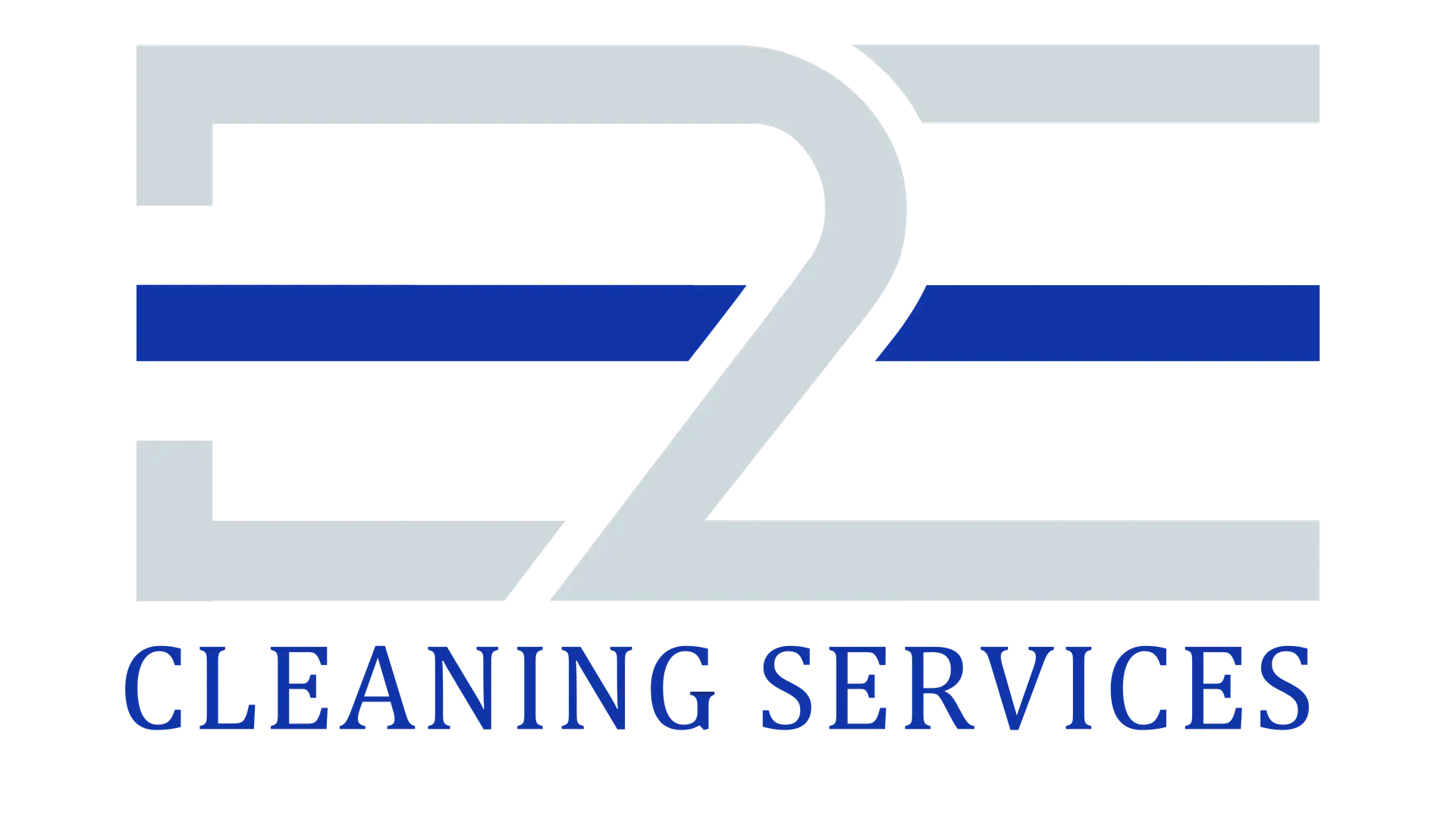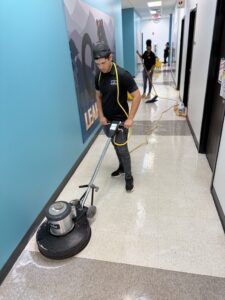This article examines complete outbreak response methods for healthcare facilities that go beyond normal cleaning practices. This paper discusses the development of medical-grade protocols, rapid response systems, specialized cleaning processes, technologies and integrated service solutions that are key to managing outbreaks in healthcare facilities.
The Critical Nature of Medical-Grade Outbreak Response
Healthcare facilities face unique challenges during pathogen outbreaks. Unlike standard business environments, these settings contain diverse pathogens within interconnected spaces, requiring specialized cleaning and sanitation protocols to prevent transmission.
Standard cleaning approaches often fail when outbreaks occur, be it a respiratory virus, gastrointestinal pathogen, or multi-drug resistant organism (MDRO). There are several critical factors that lead to this insufficiency.
- Healthcare pathogens usually need specific disinfection chemicals as well as contact times.
- Exponentially, cross contamination risks increase in treatment environments.
- Enhanced cleaning must continue while patient care activities must continue. Healthcare associated infections (HAIs) are associated with morbidity, mortality, and financial consequences.
On any given day, about 1 in 31 hospital patients has at least one HAI and approximately 72,000 people die each year as a result of HAIs, costing the healthcare system billions in avoidable costs. This is why medical grade response protocols that go beyond standard cleaning are so important.
Evolution of Healthcare Facility Outbreak Protocols
Cleaning protocols in healthcare have changed significantly over the last few decades due to new pathogens, developments in infection control science and regulatory changes.
From Visible Cleanliness to Microbial Elimination
Traditionally, environmental services in healthcare have focused on aesthetic cleanliness – removing visible dirt and maintaining the appearance. However, research showed that surfaces that appeared clean could still be teeming with dangerous pathogens.
Recognizing this paradigm shift, the healthcare industry adopted evidence-based protocols for microbial reduction through validated disinfection methods.
This evolution has been accelerated by the emergence of challenging pathogens. Clostridium difficile, with spores that are hardy and resistant to many disinfectants, required sporicidal agents and special cleaning sequences. Methicillin-resistant Staphylococcus aureus (MRSA) required more attention to high-touch surfaces and prevention of cross-contamination.
Regulatory Framework Transformation
Now, healthcare cleaning protocols run in a complex regulatory environment that includes: Conditions of
- Participation from the Centers for Medicare & Medicaid Services (CMS)
- Joint Commission Environment of Care standards (JCAHO).
- CDC and Healthcare Infection Control Practices Advisory Committee (HICPAC) guidelines.
- State-specific healthcare infection control regulations
- OSHA bloodborne pathogen standards
These regulations set minimum standards for environmental cleaning that include documented protocols, staff competency, and quality assurance measures that were not standard in commercial cleaning.
The COVID-19 Catalyst
The healthcare cleaning evolution was dramatically accelerated by the COVID-19 pandemic, setting new benchmarks for outbreak response.
The pandemic drove implementation of:
- Airborne pathogen management enhanced protocols
- Increased cleaning and disinfection frequency
- Use of advanced technology solutions such as UV disinfection and electrostatic sprayers
- More focus on real time response capabilities
- Enhanced PPE protocols and competency verification
These changes have permanently shifted the goalposts of healthcare environmental services, setting new standards in outbreak management that combine sophisticated technology with systematic human methods.
Rapid Response Systems: The Foundation of Outbreak Control
Outbreak management is only effective if immediate, coordinated action is taken to contain pathogens before widespread transmission occurs. Formal rapid response systems, activated when potential outbreaks are identified, are required in modern healthcare facilities.
The 24/7 Rapid Response Team
This system has a core of a dedicated rapid response team that can deploy within 30-60 minutes when infection control identifies a potential outbreak.
Unlike standard janitorial services, these teams:
- Operate with healthcare-specific protocols for different pathogen classes
- Maintain certifications in bloodborne pathogens, hazardous materials, and healthcare disinfection
- Deploy with specialized equipment including electrostatic sprayers, UV systems, and HEPA-filtered vacuum units
- Follow established command structures integrated with infection prevention and control
These teams operate like medical code teams, professional responder teams with defined roles, equipment, and protocols that are activated in emergency situations. Often, it is their rapid deployment capability that determines whether an isolated case becomes a facility wide outbreak.
Initial Containment Procedures
The first step of effective containment is a systematic approach to the affected area.
- Area restriction – Immediately restrict access to affected spaces, set up clean/dirty zones and traffic patterns
- Patient cohorting – Collaborating with clinical teams to isolate infected or potentially infected patients
- Enhanced barrier precautions – proper PPE donning/doffing stations and supply chains
- Source control – Identifying and addressing potential environmental reservoirs (e.g., contaminated equipment, water sources) is known as source control.
- Deep cleaning – Cleaning the immediate environment using pathogen appropriate methods
This systematic approach interrupts transmission pathways while more comprehensive measures are being put into place. To be most effective, these teams need to coordinate continuously with infection prevention, clinical staff, and facilities management.
Advanced Disinfection Technologies for Healthcare Outbreaks
Disinfection technologies that go beyond standard approaches are needed for healthcare outbreaks. Although manual cleaning is still the backbone, advanced systems greatly increase efficacy and coverage.
Electrostatic Disinfection Systems
Electrostatic sprayers changed the way we disinfect healthcare by applying an electrical charge to the disinfectant droplets, causing them to actively seek out and wrap around surfaces.
This technology:
- Achieves 360-degree surface coverage, including hard to reach areas
- Reduces disinfection time by 50 – 75% compared to traditional method
- Reduces chemical usage while increasing surface coverage
- Provides effective application for complex medical equipment and spaces
Electrostatic systems are particularly valuable during outbreaks for rapid room turnover and complete coverage in emergency departments, isolation rooms, and procedure areas where rapid disinfection is needed.
Ultraviolet Germicidal Irradiation (UVGI)
UV-C disinfection systems deliver measured doses of ultraviolet light that damage the DNA and RNA of microbes, preventing replication.
During outbreaks, modern systems have several advantages:
- Inactivates pathogens missed during manual cleaning effectively
- Important for sensitive equipment, leaves no chemical residue
- Delivered UV dose based disinfection with validated, measurable disinfection
- Effectively addresses pathogens not matter what the chemical resistance pattern is
Typically, these systems are deployed after manual cleaning and are especially valuable for terminal cleaning of rooms that housed patients with highly transmissible pathogens.
Hydrogen Peroxide Vapor/Mist Systems
Hospital grade disinfection of entire spaces is delivered through vaporized or aerosolized hydrogen peroxide systems for maximum pathogen reduction.
- To achieve 6-log (99.9999%) reduction of bacterial spores, vegetative bacteria, viruses, and fungi
- Will reach all surfaces, including complex equipment and ventilation systems
- Breaks down to minimal residue, leaving breakdown products of water and oxygen
- Provide documented, reproducible disinfection efficacy
These systems, which require longer deployment times (2-8 hours) and room sealing, are essential for outbreak containment of pathogens such as C. difficile that can persist longer in the environment.
Integrating Day Porter Services in Outbreak Management
Continuous environmental management becomes a critical issue during healthcare outbreaks. Real time response beyond scheduled cleaning is provided by dedicated day porters who are the ‘environmental first responders’ during operating hours.
Enhanced High-Touch Point Disinfection
Pathogen specific risk assessments are used to determine the implementation of intensified disinfection schedules for high touch surfaces by day porters.
During outbreaks, these may include:
- Disinfection of waiting area surfaces, registration desks, and public restrooms on an hourly basis
- Shared equipment such as wheelchairs, vitals stations, and kiosks are targeted to receive attention
- Surveillance of clinical areas with special emphasis on the nursing stations and charting areas
- Breakout rooms and conference rooms are well maintained..
Continuous disinfection reduces the bioburden on frequently touched surfaces that act as reservoirs of pathogens between standard cleaning cycles, disrupting transmission.
Professional healthcare facility disinfection. Click to ensure complete pathogen elimination
Real-Time Response Capabilities
The day porter’s ability to address contamination events immediately may be most valuable during outbreaks from:
- Spills of blood and body fluid that require specialized cleanup protocols
- Incidents in the bathroom that need to be disinfected immediately to avoid pathogen spread
- Rapid disinfection in patient discharge room turnover
- Equipment cleaning between patient uses
The real-time capability of this system fills critical gaps in standard environmental services scheduling, preventing extended contamination that could amplify pathogen spread during outbreaks.
Conclusion
Creating a Comprehensive Outbreak Response Program
In order to implement a truly effective healthcare outbreak response program, we need to move beyond isolated protocols and instead create a comprehensive system that integrates people, processes, and technologies.
The first step in this integration is dedicated staff trained in healthcare pathogens and disinfection sciences, not general commercial cleaning. The most successful programs are ready to go all the time, not just scrambling to put protocols in place when outbreaks occur.
This readiness includes:
- Training for regular staff on various outbreak scenarios
- Equipment staging and supply management already established
- Different pathogen classes pre-approved for chemical selection
- Communication pathways and activation triggers that are documented
- Regular drills and competency verification
- Relationship development with infection prevention ongoing
From a budgeting standpoint, the costs of outbreaks (extended patient stays, additional treatments, potential liability, reputational damage) are substantial, and facilities must weigh this against the investment in advanced technologies and specialized staffing.
According to the CDC, HAIs cost U.S. healthcare an estimated $28-45 billion per year. A modest reduction in outbreak impact by improved environmental services provides significant return on investment.
The landscape of healthcare facility outbreaks is changing with new pathogens, antibiotic resistance, and changing patient demographics. As the evidence and technology changes, cleaning service providers must continue to update their protocols and position themselves as infection prevention partners, not just service vendors.
The basis of truly effective medical grade outbreak response is a partnership approach, with evidence based protocols and advanced technologies.






